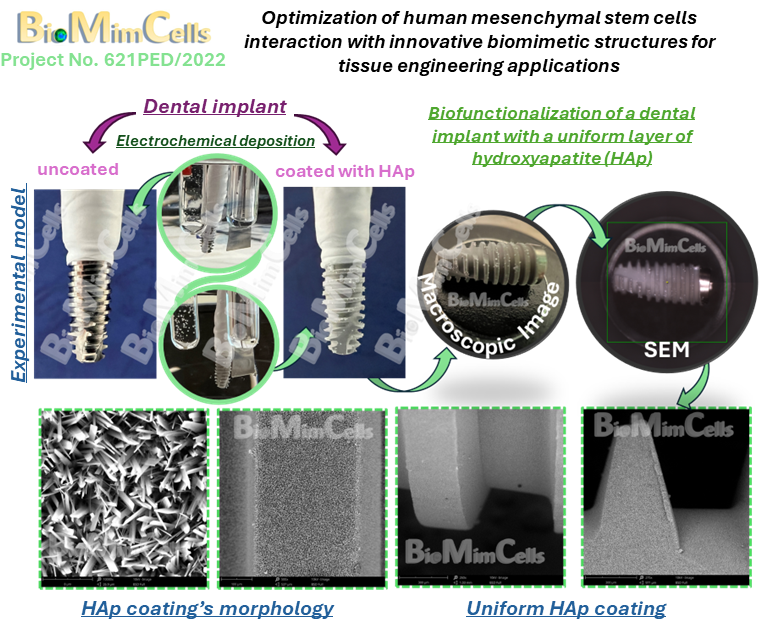Home
Project title:
Optimization of human mesenchymal stem cells interaction with innovative biomimetic structures for tissue engineering applications
Acronym: BioMimCells
Project no.: 621PED/2022
Project code: PN-III-P2-2.1-PED-2021-4275
Project implementation
Starting date: 30.06.2022
Finishing date: 29.06.2024
Contracting authority: UEFISCDI - Executive Unit for Financing Higher Education, Research, Development and Innovation
Brief presentation of the project results
The project aim is to find solutions to increase tissue regeneration by accelerating the acceptance time between the biomaterials and bone, especially of the implants used in poor quality bone or in patients with compromised immune systems. The proposed solution consists in optimizing the interaction of human mesenchymal stem cells (MSCs) with innovative biomimetic structures, to create and provide an environment that favors osseointegration, with more active contact osteogenesis, a more rapid mineral apposition rate and greater osseointegration index values for tissue engineering applications.
Following the complex tests carried out, an experimental model consisting of a commercial dental implant coated with a layer of biomimetic hydroxyapatite with a ribbon like morphology, which presented enhanced characteristics in terms of biomineralization, electrochemical behavior and the best behavior in terms of interaction with human mesenchymal stem cells (MSC). The experimental model was macroscopically and microscopically analyzed, as well as tested in terms of wettability by immersing it in DMEM medium supplemented with 10% fetal bovine serum. The investigations carried out on the experimental model highlighted that the dental implant was coated with a uniform and compact layer on the entire surface, including in the hard-to-reach areas, such as the apex or the base of the spirals. The test carried out on the experimental model revealed that the HAp coating is hydrophilic, the entire dental implant being fully wetted in approximately 10 seconds after immersing it in the testing solution (video below). In conclusion, it can be stated that the electrochemical technique is a versatile technique, which can be successfully implemented to obtain hydroxyapatite coatings on implantable medical devices with complex geometries, thus opening new opportunities for personalized medicine.

Dental implant coated with high hydrophilic HAp-II™